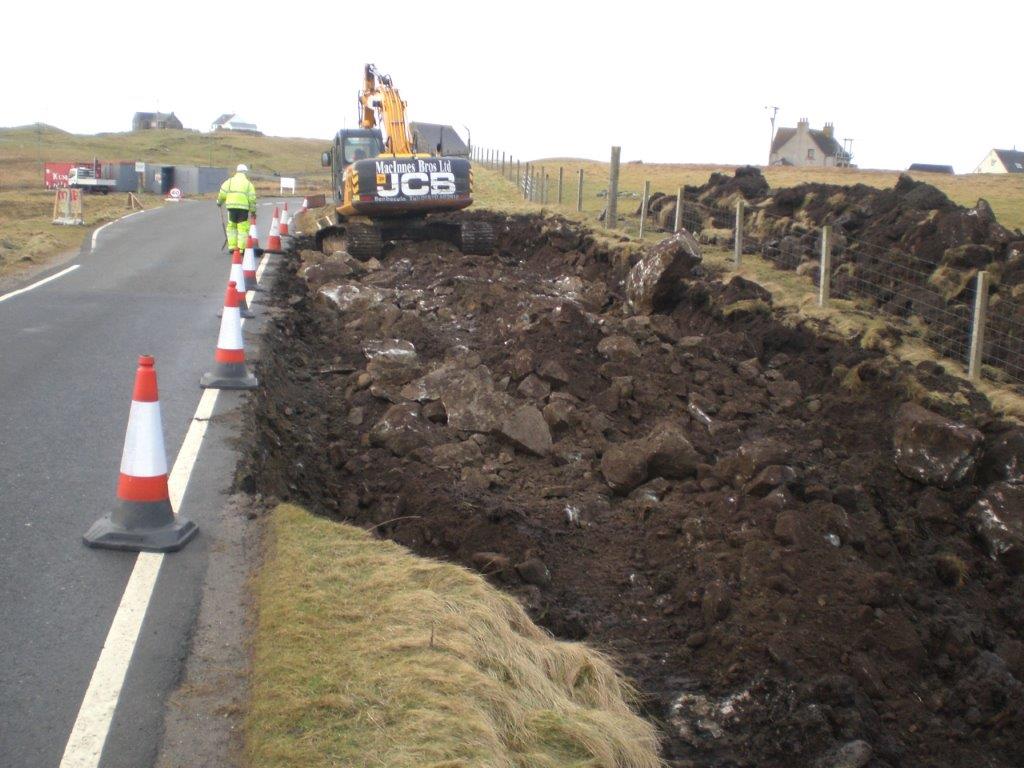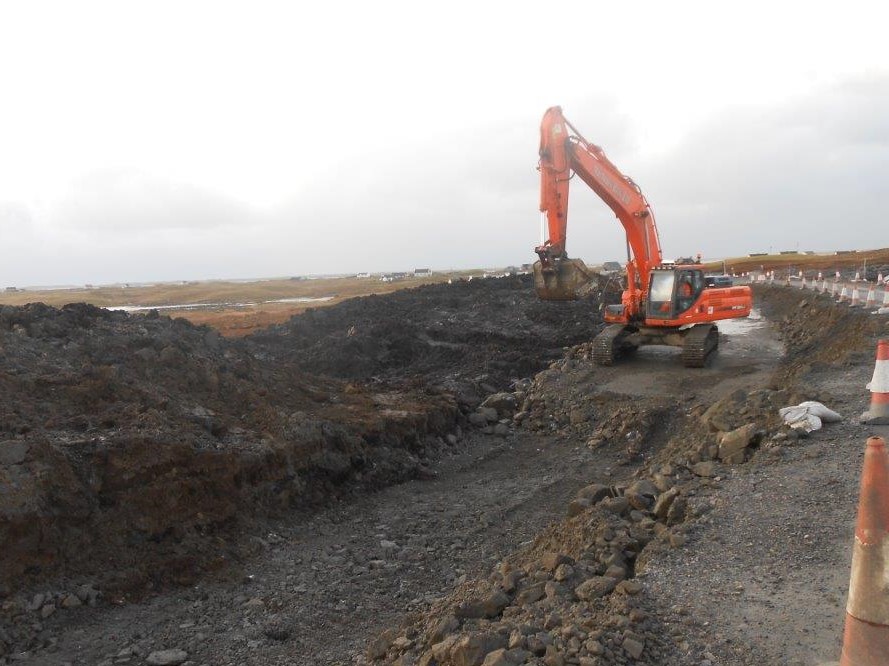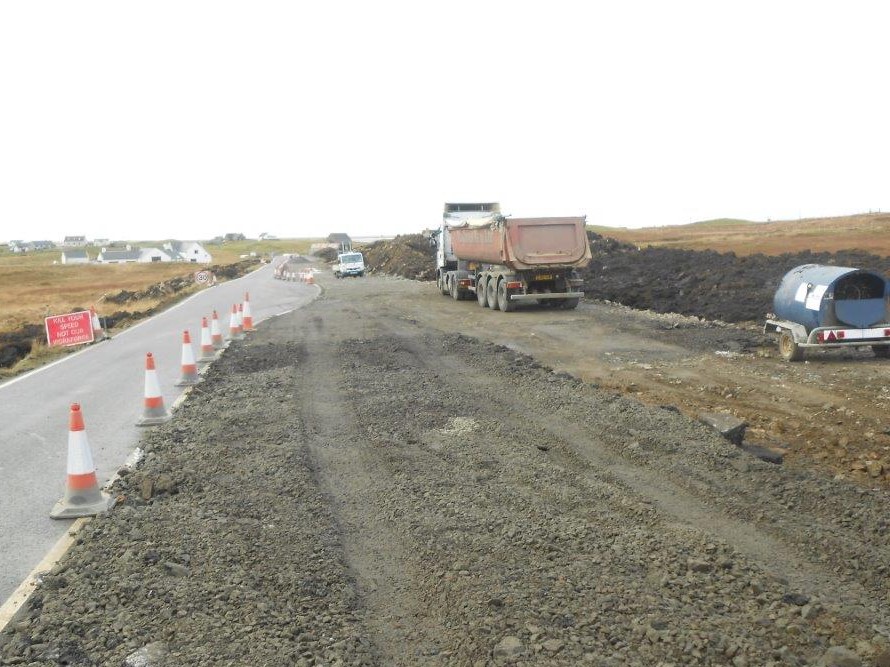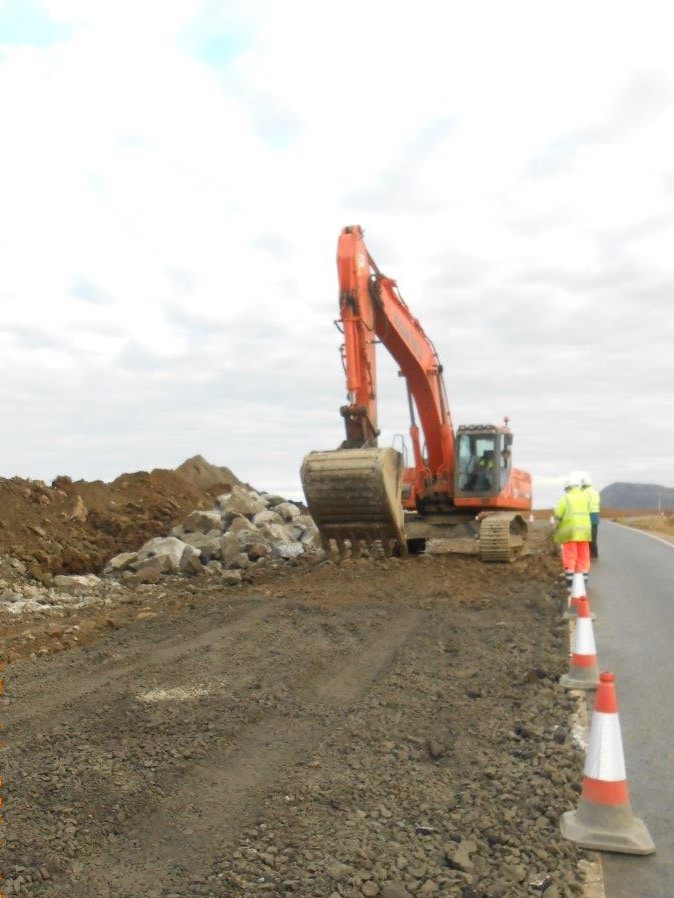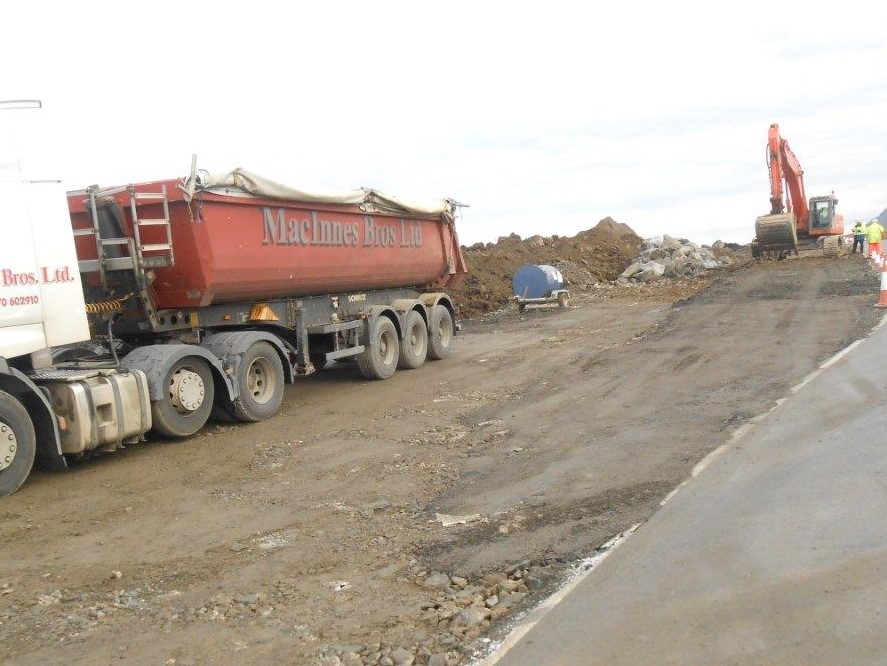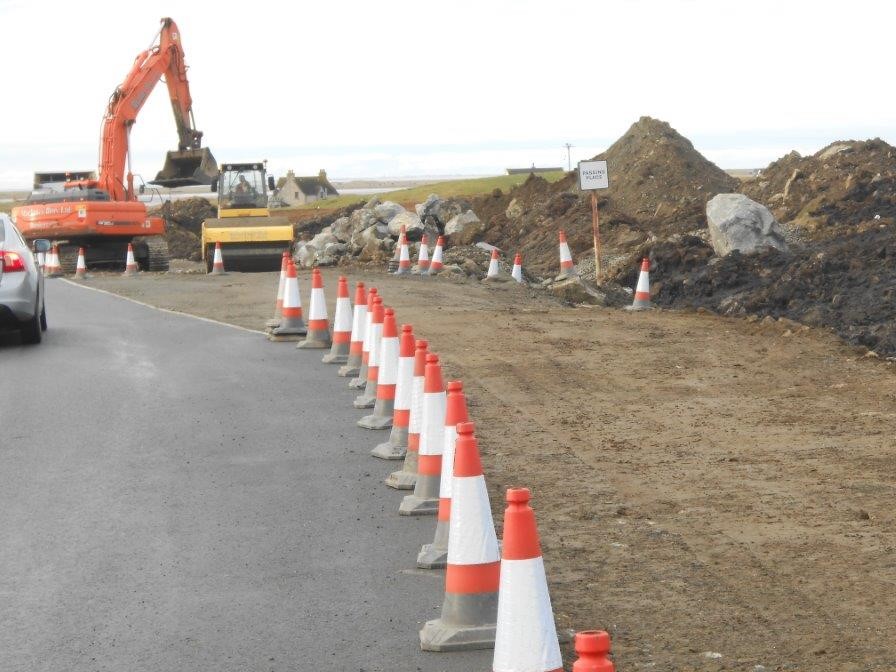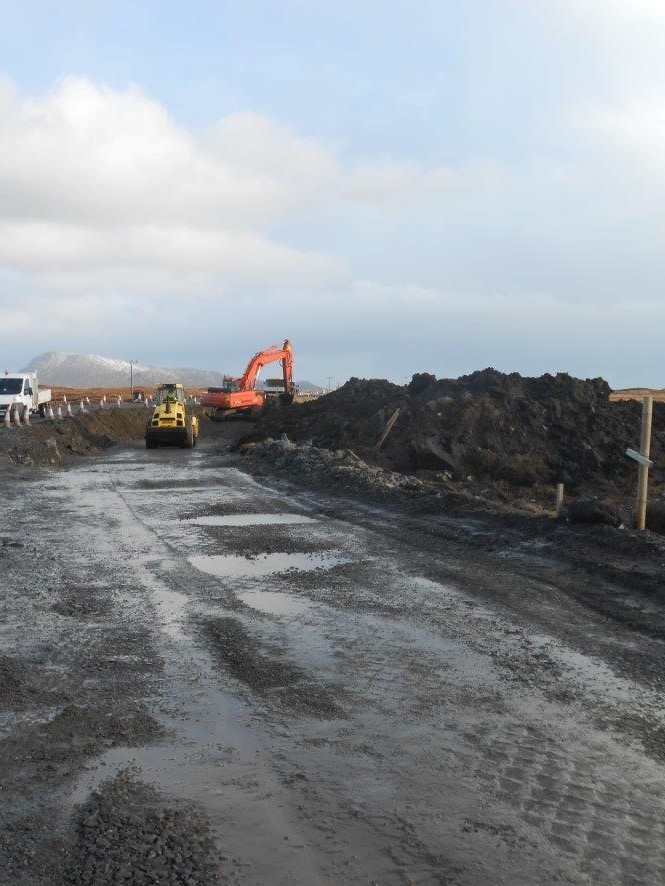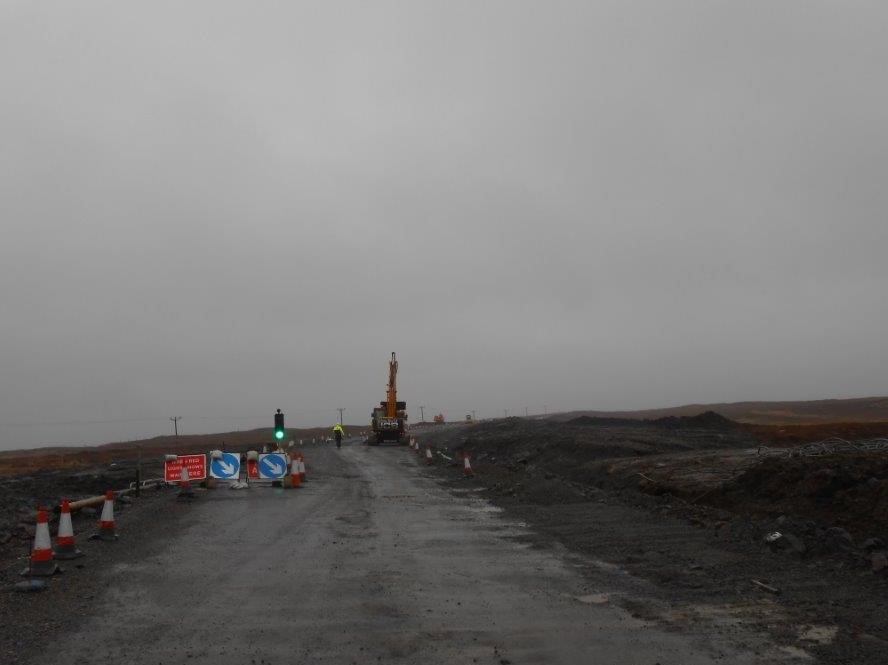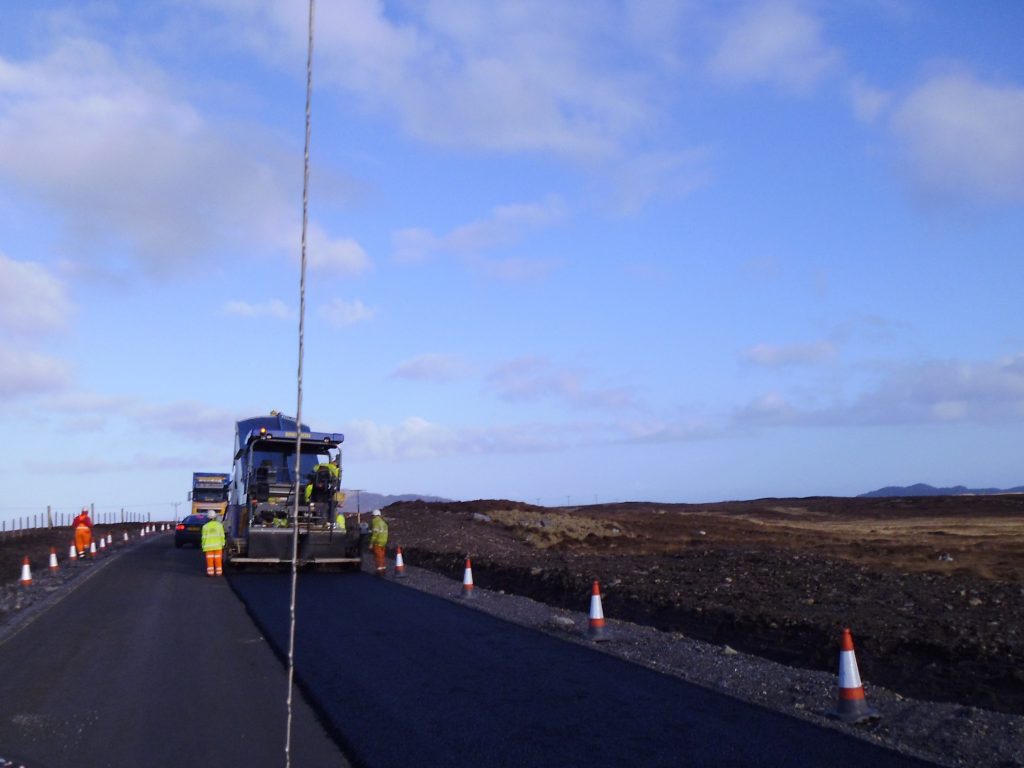MacInnes Bros were employed as the Principal Contractor on this project which involved the construction of three separate sections of double track road of approximately 1.1km along the main spinal road in North Uist.
The main content of the works was the replacement of existing sections of single track road including all associated drainage, culverting and service diversion works, fencing, road marking, signing, landscaping and reinstatements.
This contract was accepted as a fixed price based contract by CNES. An in depth understanding of the geography and conditions of the site and surrounding area were required in order that MacInnes Bros were able to make the offer of a fixed price contract, we were able to use local experience and knowledge to provide Value for Money for the Comhairle.
All works were undertaken in the remote and exposed location on the southern end of North Uist, the site also being designated as one of natural beauty. Gaining access to local crofters land and being aware of and sensitive to the needs of these crofters was also a feature of these works.
During construction MacInnes Bros were able to provide employment opportunities for local people: plant operators, HGV drivers, labourers and a site supervisor. In addition to sourcing staff locally, we actively sought to source materials from local suppliers. Aggregate and rock was sourced locally to ensure that the benefit of these orders were channelled to the local community rather than placing the orders with off island suppliers who had offered lower prices.
Effective preplanning was paramount to ensure a minimum of disruption the local community. Addressing potential issues in advance helped with the smooth running of the works and ensured continuity.
Major Plant acquisitions were made for this contract as it was important to us to maximise productivity and value for money by ensuring we had the best available plant and machinery for this contract.
During construction we had to deal with excessive water in poor ground conditions during excavating. This was generally where excavations were in excess of 4 metres. Lessons were learned and experience gained in dealing with these conditions. The problem were overcome by diverting water away temporarily from the area being excavated. We are now more aware of this potential problem and how to address it in future contracts.
These works were completed successfully – on time and on budget.


